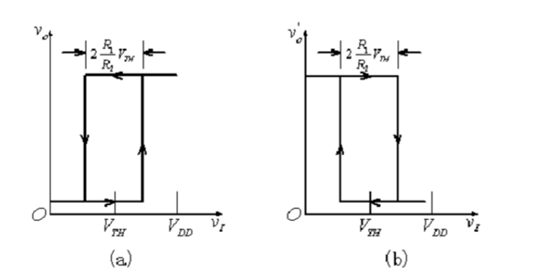Schmidt flip-flop
Schmidt trigger is a pulse waveform conversion circuit with hysteresis characteristic. It has two stable output states: 0 state and 1 state. When the receiver triggers the signal level to reach the threshold level , the output level will change, and the mutation is caused by the positive feedback inside the circuit, so the transformation speed of the output state is very fast, the rise time and the drop time of the pulse waveform are very short, so that the Schmidt trigger will be able to change the slow transmission. The number is transformed into a rectangular wave output.
The properties of Schmidt flip-flops
(1) The return difference characteristic Schmidt flip-flop has the return difference characteristic. When the signal voltage increases, the voltage value that causes the output level mutation is called the upper threshold level (also called the upper threshold), which is expressed in Ur+. The conversion level of the output signal voltage is reduced, and the conversion level that causes the output level mutation is called the lower threshold level (also called the lower threshold). It is represented by Ur-.
The upper threshold level of Schmidt flip flop is not equal to the lower threshold level. The difference between them is called backlash voltage, which is expressed by △Ur, that is, △Ur =Ur+ -Ur-. The existence of return voltage increases the anti-interference ability of digital circuits.
(2) the voltage transmission characteristic of the voltage transmission characteristic Schmidt trigger is shown in figure a; figure b is a reverse phase transmission characteristic, and the output is inverse (logically) for the transmiss.

If you want to know more, our website has product specifications for the triggers, you can go to ALLICDATA ELECTRONICS LIMITED to get more information.

